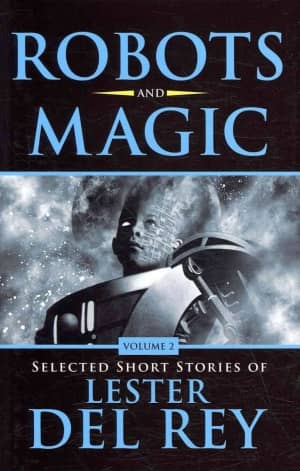Birthday Reviews: Lester del Rey’s “Fade-Out”

Lester del Rey was born on June 2, 1915 and died on May 10, 1993.
In 1972, he received the Skylark Award from NESFA. He and wife Judy-Lynn del Rey won the Milford Award in 1982 and del Rey won the coveted Balrog Award in 1985. He was named a Grand Master by SFWA in 1991. Along with his wife, del Rey ran Del Rey Books, for which he was nominated for a Special World Fantasy Award four times. Four of his stories, “Into They Hands,” “Helen O’Loy,” “The Faithful,” and “Nerves” have been nominated for Retro-Hugos.
“Fade-Out” was originally published in Harry Warner’s fanzine Spaceways. When del Rey published The Early del Rey in 1975, he claimed that he remembered an early story that appeared in Spaceways, but could not remember the title. He relegated the story, which he no longer had, to the dust bin of history. When I was editing the two volume Selected Stories of Lester del Rey for NESFA Press, I came across the reference to “Fade-Out” and decided that, although the collections were not meant to be complete (about 1/3 of his short fiction was not included), I wouldn’t feel successful until I had tracked down the story and at least considered it for inclusion. It was reprinted in 2010 in Robots and Magic: Volume 2 of Selected Short Stories of Lester del Rey.
Jack Kirbey is an inventor who takes the Tibetan concoctions of his partner, Tse-Shan, and packages them for western consumption. Unfortunately, the two men have had only limited success, partly because they sold the rights to their first tonic, Tibetan Hair Invigorator, to an unscrupulous businessman, Burroughs. On the verge of being thrown out of their apartment and penniless, Kirbey begin experimenting with an invisibility potion that Tse-Shan told him about.
Invisible, Kirbey decides to play ghost and visit the businessman who took advantage of them, trying to set things right and make sure they will have all the money they need. Del Rey describes his trip from their apartment to the reseller and back. Unfortunately, the effects of the potion on Kirbey seem to follow the needs of the plot at any given moment. Generally, Kirbey is unable to touch anything. He can’t call for an elevator, open a door, are signal for a trolley to stop. At the same time, he needs to be careful he doesn’t bump anyone and has to avoid people sitting on him, so while his invisibility is intact, the commensurate incorporeality seems to come and go.
Kirbey has a moral center that he uses in his dealings with both Tse-Shan and Burroughs, although his personal undoing is caused by his own eagerness. The story is slight and could have been better throughout, but it ranks with much of del Rey’s more-often reprinted works.
Reprint reviewed in the collection Robots and Magic, by Lester del Rey, edited by Steven H Silver, NESFA Press 2010.
 Steven H Silver is a sixteen-time Hugo Award nominee and was the publisher of the Hugo-nominated fanzine Argentus as well as the editor and publisher of ISFiC Press for 8 years. He has also edited books for DAW and NESFA Press. He began publishing short fiction in 2008 and his most recently published story is “Doing Business at Hodputt’s Emporium” in Galaxy’s Edge. Steven has chaired the first Midwest Construction, Windycon three times, and the SFWA Nebula Conference 6 times, as well as serving as the Event Coordinator for SFWA. He was programming chair for Chicon 2000 and Vice Chair of Chicon 7. He has been the news editor for SF Site since 2002.
Steven H Silver is a sixteen-time Hugo Award nominee and was the publisher of the Hugo-nominated fanzine Argentus as well as the editor and publisher of ISFiC Press for 8 years. He has also edited books for DAW and NESFA Press. He began publishing short fiction in 2008 and his most recently published story is “Doing Business at Hodputt’s Emporium” in Galaxy’s Edge. Steven has chaired the first Midwest Construction, Windycon three times, and the SFWA Nebula Conference 6 times, as well as serving as the Event Coordinator for SFWA. He was programming chair for Chicon 2000 and Vice Chair of Chicon 7. He has been the news editor for SF Site since 2002.
You should have covered “Boiling Point” (Amazing, May 1964) instead.
(Because it’s actually by Robert Silverberg. 🙂 )
You might note that I did not include “Boiling Point” in either of the Del Rey collections I edited.